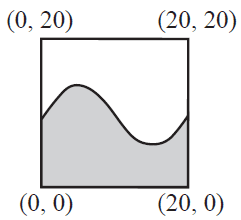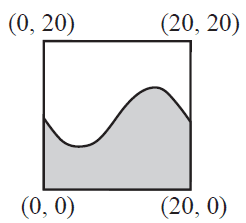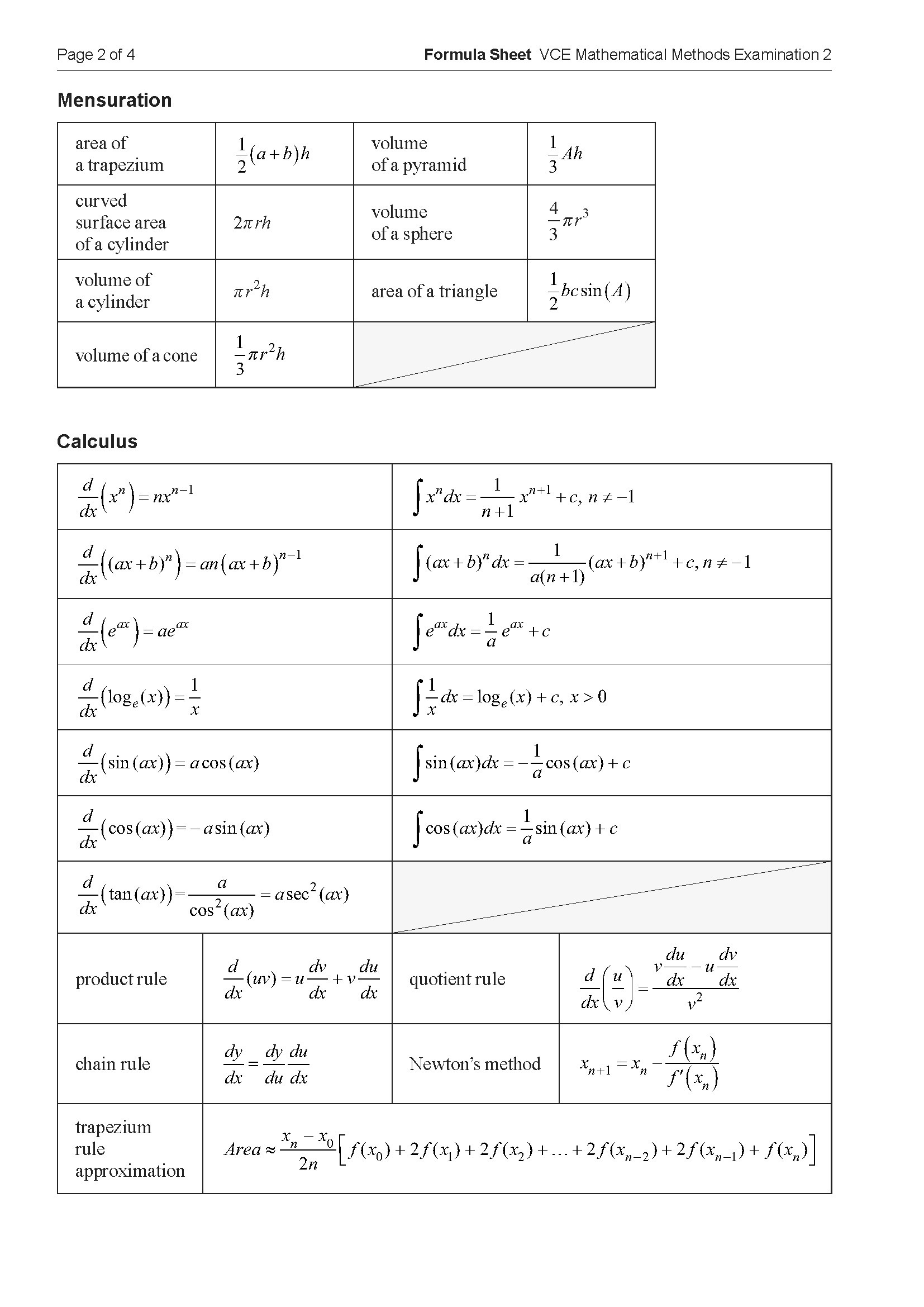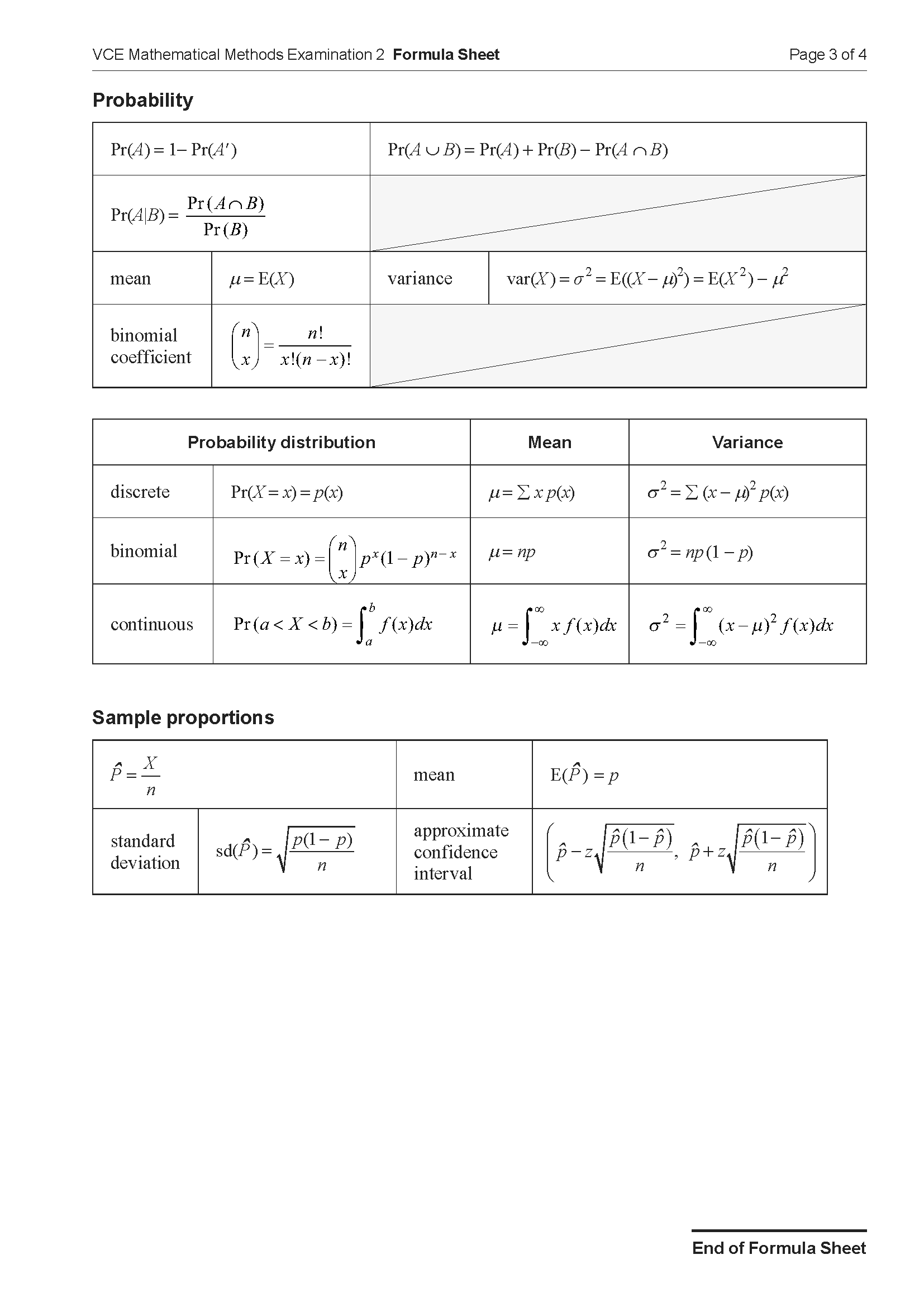2022 VCE Maths Methods Mini Test 9
Number of marks: 10
Reading time: 2 minutes
Writing time: 15 minutes
Section A – Calculator Allowed
Instructions
• Answer all questions in pencil on your Multiple-Choice Answer Sheet.
• Choose the response that is correct for the question.
• A correct answer scores 1; an incorrect answer scores 0.
• Marks will not be deducted for incorrect answers.
• No marks will be given if more than one answer is completed for any question.
• Unless otherwise indicated, the diagrams in this book are not drawn to scale.
The function \( f(x) = \log\left(\frac{a + x}{a - x}\right) \), where \( a \) is a positive real constant, has the maximal domain
- A. [–a, a]
- B. (–a, a)
- C. \( \mathbb{R} \setminus [–a, a] \)
- D. \( \mathbb{R} \setminus (–a, a) \)
- E. \( \mathbb{R} \)
A continuous random variable, \( X \), has a probability density function given by
\[ f(x) = \begin{cases} \frac{2}{9}x e^{-\frac{1}{9}x^2}, & x \geq 0 \\ 0, & x < 0 \end{cases} \]
The expected value of \( X \), correct to three decimal places, is
- A. 1.000
- B. 2.659
- C. 3.730
- D. 6.341
- E. 9.000
The maximal domain of the function with rule \( f(x) = \sqrt{x^2 - 2x - 3} \) is given by
- A. \( (-\infty, \infty) \)
- B. \( (-\infty, -3) \cup (3, \infty) \)
- C. \( (-1, 3) \)
- D. [–3, 1]
- E. \( (-\infty, -1] \cup [3, \infty) \)
End of Section A
Section B – No Calculator
Instructions
• Answer all questions in the spaces provided.
• Write your responses in English.
• In questions where a numerical answer is required, an exact value must be given unless otherwise specified.
• In questions where more than one mark is available, appropriate working must be shown.
• Unless otherwise indicated, the diagrams in this book are not drawn to scale.
A tilemaker wants to make square tiles of size 20 cm × 20 cm. The front surface of the tiles is to be painted with two different colours that meet the following conditions:
- • Condition 1 – Each colour covers half the front surface of a tile.
- • Condition 2 – The tiles can be lined up in a single horizontal row so that the colours form a continuous pattern.

There are two types of tiles: Type A and Type B.
For Type A, the colours on the tiles are divided using the rule \( f(x) = 4 \sin\left(\frac{\pi x}{10}\right) + a \), where \( a \in \mathbb{R} \). The corners of each tile have the coordinates (0, 0), (20, 0), (20, 20) and (0, 20), as shown below.

a.
i. Find the area of the front surface of each tile. 1 mark
ii. Find the value of \(a\) so that a Type A tile meets Condition 1. 1 mark
Type B tiles, an example of which is shown below, are divided using the rule \( g(x) = -\frac{1}{100}x^3 + \frac{3}{10}x^2 - 2x + 10 \).

b. Show that a Type B tile meets Condition 1. 3 marks
c. Determine the endpoints of \(f(x)\) and \(g(x)\) on each tile. Hence, use these values to confirm that Type A and Type B tiles can be placed in any order to produce a continuous pattern in order to meet Condition 2. 2 marks
End of examination questions
VCE is a registered trademark of the VCAA. The VCAA does not endorse or make any warranties regarding this study resource. Past VCE exams and related content can be accessed directly at www.vcaa.vic.edu.au

